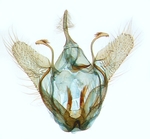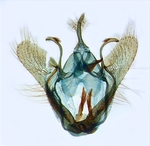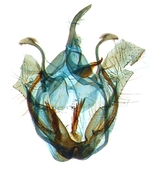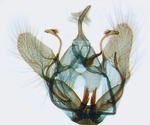
Male genitalia; Carteret County; J.B. Sullivan. |

Aedeagus; North Carolina; J.B. Sullivan. |

Aedeagus. Specimen collected February 27, 2017, Carteret County, by J.B. Sullivan. |

Female genitalia; Craven County, by J.B. Sullivan. |

Male genitalia; North Carolina; J.B. Sullivan. |

Male genitalia; North Carolina; J.B. Sullivan. |

Male genitalia; North Carolina; J.B. Sullivan. |

Male genitalia; North Carolina; J.B. Sullivan. |

Male genitalia; North Carolina; J.B. Sullivan. |

Aedeagus; North Carolina; J.B. Sullivan. |

Aedeagus; North Carolina; J.B. Sullivan. |

Aedeagus; North Carolina; J.B. Sullivan. |

Male pelt; North Carolina; J.B. Sullivan. |

Male pelt; North Carolina; J.B. Sullivan. |

 »
»


 »
»
